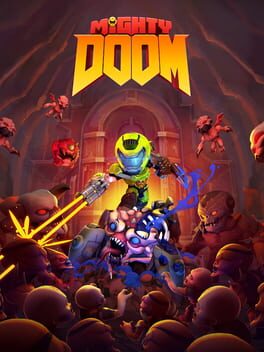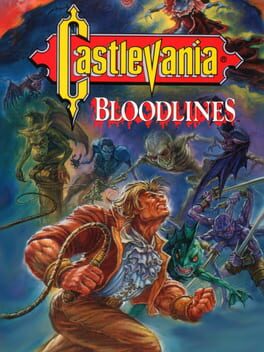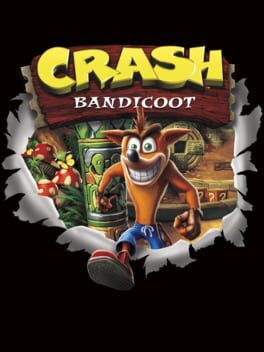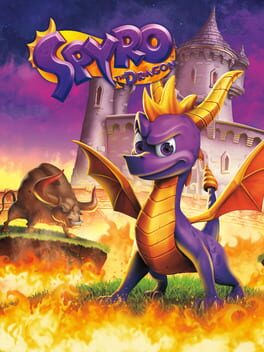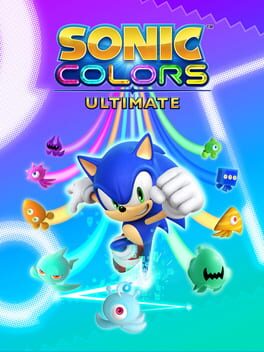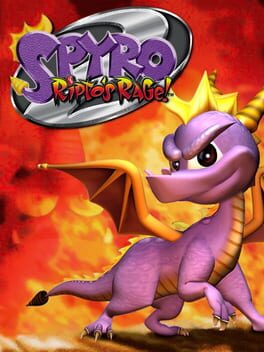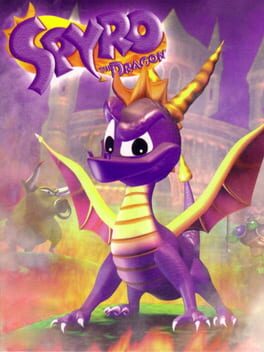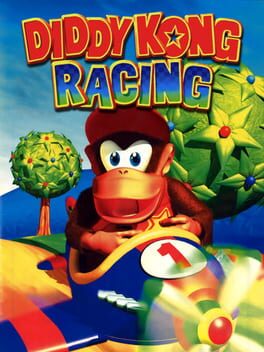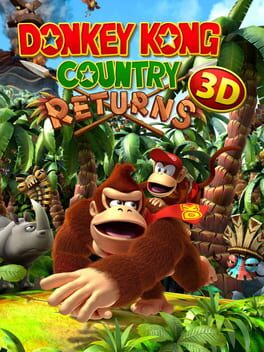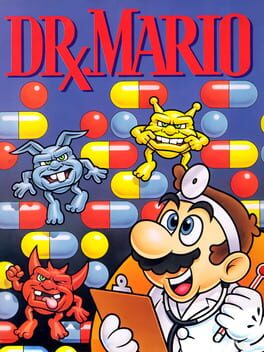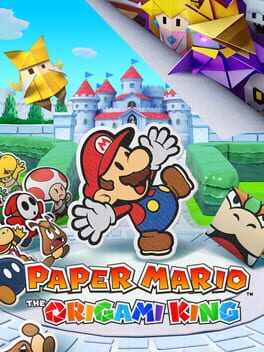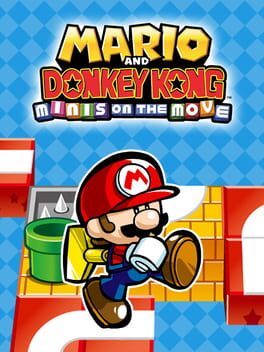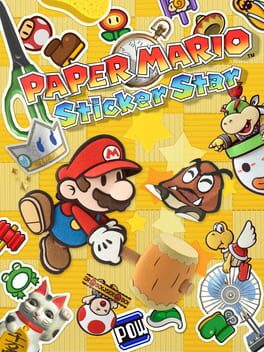1993
Ah, Doom. What’s there to even say? It’s an awesome thrill ride and one of the most influential games ever made.
Doom has its flaws; some of the maps are overly simplistic or overly cryptic. That being said… shooting demons is so much fun that it barely matters. Rip and tear. Rip and tear! RIP AND TEAR!
Doom has its flaws; some of the maps are overly simplistic or overly cryptic. That being said… shooting demons is so much fun that it barely matters. Rip and tear. Rip and tear! RIP AND TEAR!
2023
Castlevania: Bloodlines is a strange little game, but that’s definitely to its benefit.
You don’t play as a Belmont this time around (well, one of them is related to the Belmonts, but only distantly); rather, you play as John Morris— the son of Quincey Morris from Bram Stoker’s original Dracula novel— and Eric Lecarde, a noble spearman out to avenge the death of his wife. Dracula and Death are still here (as always), but the main antagonist this time around is instead Elizabeth Bartley (based on a possible serial killer from the 1600s), Dracula’s “niece” who orchestrates World War I to raise an undead army and resurrect the Count himself.
None of that story stuff is really relevant; it’s all found in the manual and a brief opening cutscene. Yet the sheer amount of detail the developers shoved into the game’s backstory goes to show that this isn’t your typical Classicvania.
Instead of exploring Dracula’s castle or the Transylvanian countryside, you’re on an international adventure across a war-torn Europe. Gothic castles? Creepy graveyards? Nah, now you’re trekking across battlefields, wading in Atlantean ruins (for some reason), scaling the Leaning Tower of Pisa, and invading munitions factories. And yes, there is a skeleton with a fucking machine gun.
All of these unique settings, combined with the Sega Genesis' graphical capabilities and the typically solid Castlevania art direction, make for some truly memorable set pieces that stand out among a series filled with awesome set pieces.
Also, don’t play as John. Play as Eric. His spear has a ridiculously long reach and allows him to pull off a super jump. He’s awesome.
Overall, what Castlevania: Bloodlines lacks in length, it more than makes up for with its fast-paced action, fun platforming, and sheer creativity. I’ll have to play Portrait of Ruin at some point to see where this wild storyline goes next.
You don’t play as a Belmont this time around (well, one of them is related to the Belmonts, but only distantly); rather, you play as John Morris— the son of Quincey Morris from Bram Stoker’s original Dracula novel— and Eric Lecarde, a noble spearman out to avenge the death of his wife. Dracula and Death are still here (as always), but the main antagonist this time around is instead Elizabeth Bartley (based on a possible serial killer from the 1600s), Dracula’s “niece” who orchestrates World War I to raise an undead army and resurrect the Count himself.
None of that story stuff is really relevant; it’s all found in the manual and a brief opening cutscene. Yet the sheer amount of detail the developers shoved into the game’s backstory goes to show that this isn’t your typical Classicvania.
Instead of exploring Dracula’s castle or the Transylvanian countryside, you’re on an international adventure across a war-torn Europe. Gothic castles? Creepy graveyards? Nah, now you’re trekking across battlefields, wading in Atlantean ruins (for some reason), scaling the Leaning Tower of Pisa, and invading munitions factories. And yes, there is a skeleton with a fucking machine gun.
All of these unique settings, combined with the Sega Genesis' graphical capabilities and the typically solid Castlevania art direction, make for some truly memorable set pieces that stand out among a series filled with awesome set pieces.
Also, don’t play as John. Play as Eric. His spear has a ridiculously long reach and allows him to pull off a super jump. He’s awesome.
Overall, what Castlevania: Bloodlines lacks in length, it more than makes up for with its fast-paced action, fun platforming, and sheer creativity. I’ll have to play Portrait of Ruin at some point to see where this wild storyline goes next.
2017
The original Crash Bandicoot is impressive, but a relic of its time. Its level design is pretty good overall, but the stupid D-pad controls make it needlessly difficult to the point that I gave up on the third-to-last level and bought this instead. Don’t get me wrong though; Naught Dog has my absolute respect for managing to make a linear 3D platformer so early in the history of video games, and I’m happy that Crash 1 led to a both successful franchise and an acclaimed career for Naughty Dog themselves.
Still, the N. Sane version of Crash Bandicoot is better than the original in practically every day. The analog stick means that Crash now has a much wider range of movement that makes him hella fun to control. The graphics and art style are nice and vibrant, looking surprisingly good even on my dying Switch. The voice acting and cutscenes have been completely redone for the modern day. You no longer lose all your boxes upon dying. You can save anytime you want. Oh, and did I mention that the controls are better? I did? Well, I had to say it again, because they’re such a staunch improvement over the PS1 game. There is simply NO REASON to go back and play the original when I have this instead.
That being said, I do think some aspects just aren’t fun. I don’t like some of the backtracking required to get gems and some levels are too hard for their own good (skill issue, I know, but don’t pretend that The High Road is actually a fun level).
There are some standout levels that I really enjoyed, so here we go:
— Jungle Rollers and Rolling Stones: I don’t know why, but I find the rolling rocks to be a super fun gimmick that makes for some great timing-based platforming.
— Boulders and Boulder Dash: Like the mine cart levels in Donkey Kong Country, these are fast-paced, reaction-based trials that are as stressful as they are rewarding.
— Upstream and Up the Creek: Some relaxing thoroughly enjoyable breathers after two VERY difficult levels.
— Road to Nowhere: A super challenging, yet highly engaging gauntlet that requires precision and quick thinking to get through. Way better than The High Road.
— Heavy Machinery: A badass sidescroller as Crash breaks into Cortex’s facilities and methodically lays waste to his operations.
— The Lab: My favorite level, The Lab is an absolutely amazing, difficult, and impressive final challenge that acts as a perfect culmination of everything that led up to it.
Yeah, Crash 1 N. Sane is awesome, if imperfect. Good thing it came bundled with two even better sequels.
Still, the N. Sane version of Crash Bandicoot is better than the original in practically every day. The analog stick means that Crash now has a much wider range of movement that makes him hella fun to control. The graphics and art style are nice and vibrant, looking surprisingly good even on my dying Switch. The voice acting and cutscenes have been completely redone for the modern day. You no longer lose all your boxes upon dying. You can save anytime you want. Oh, and did I mention that the controls are better? I did? Well, I had to say it again, because they’re such a staunch improvement over the PS1 game. There is simply NO REASON to go back and play the original when I have this instead.
That being said, I do think some aspects just aren’t fun. I don’t like some of the backtracking required to get gems and some levels are too hard for their own good (skill issue, I know, but don’t pretend that The High Road is actually a fun level).
There are some standout levels that I really enjoyed, so here we go:
— Jungle Rollers and Rolling Stones: I don’t know why, but I find the rolling rocks to be a super fun gimmick that makes for some great timing-based platforming.
— Boulders and Boulder Dash: Like the mine cart levels in Donkey Kong Country, these are fast-paced, reaction-based trials that are as stressful as they are rewarding.
— Upstream and Up the Creek: Some relaxing thoroughly enjoyable breathers after two VERY difficult levels.
— Road to Nowhere: A super challenging, yet highly engaging gauntlet that requires precision and quick thinking to get through. Way better than The High Road.
— Heavy Machinery: A badass sidescroller as Crash breaks into Cortex’s facilities and methodically lays waste to his operations.
— The Lab: My favorite level, The Lab is an absolutely amazing, difficult, and impressive final challenge that acts as a perfect culmination of everything that led up to it.
Yeah, Crash 1 N. Sane is awesome, if imperfect. Good thing it came bundled with two even better sequels.
2018
This is THE way to play the original Spyro. Obviously the graphics and art style are a beautiful, modernized take on the World of Dragons that still capture the spirit of the original, but even beyond that, there are quite a few improvements.
For one, you can have Sparx point you in the direction of missing gems with a simple push of the analog stick. This does WONDERS for making 100% completion more appealing to newcomers (like myself). Some might say that ruins the sense of discovery, but I think it’s pretty similar to the Shrine Meter in Breath of the Wild: it tells where to go, but not how to get there, meaning that you’ll still have to figure out the path for yourself.
The controls are a huge step up from the PS1 version. Fun fact: all modern consoles have analog sticks. That means this game uses analog control, as opposed to the janky D-pad buttons from the PS1, the latter of which is definitely not ideal for a 3D platformer. On top of that, I feel like the Supercharge works far better in this remake and is easier to control, which led to me actually completing the dreaded Tree Tops level for the first time.
One final praise: the story additions. The game still has the same excuse plot (go rescue the dragons and kick some Gnorc ass), but there’s a lot more detail this time around. Every single dragon has a unique design, which is super impressive and is one of those things that’s unnecessary, yet goes to show how much love Toys for Bob put into this project. We actually see Gnasty Gnorc watching the dragons’ interview on TV at the beginning, which explains how he knew they were shit-talking him. Gnasty Gnorc himself gets a moment of sympathy; when the dragons call him “ugly”, he gets puppy dog eyes and looks genuinely hurt by the insult, thus providing a slight bit of depth to his character that wasn’t there before. Also, his lair is filled with funny Gnorc-themed inspirational posters and love letters that he writes to himself in an effort to boost his self-esteem. Poor Gnasty Gnorc; bro just needs a hug.
I’ve got a lot more to say, but I’ll leave it at that until I review the whole trilogy. Needless to say, this is the definitive version of Spyro 1, and I highly recommend it to those who enjoy 3D platformers or simply want a chill game to play on a rainy night. Going for 100% was absolutely a fun and worthwhile endeavor.
For one, you can have Sparx point you in the direction of missing gems with a simple push of the analog stick. This does WONDERS for making 100% completion more appealing to newcomers (like myself). Some might say that ruins the sense of discovery, but I think it’s pretty similar to the Shrine Meter in Breath of the Wild: it tells where to go, but not how to get there, meaning that you’ll still have to figure out the path for yourself.
The controls are a huge step up from the PS1 version. Fun fact: all modern consoles have analog sticks. That means this game uses analog control, as opposed to the janky D-pad buttons from the PS1, the latter of which is definitely not ideal for a 3D platformer. On top of that, I feel like the Supercharge works far better in this remake and is easier to control, which led to me actually completing the dreaded Tree Tops level for the first time.
One final praise: the story additions. The game still has the same excuse plot (go rescue the dragons and kick some Gnorc ass), but there’s a lot more detail this time around. Every single dragon has a unique design, which is super impressive and is one of those things that’s unnecessary, yet goes to show how much love Toys for Bob put into this project. We actually see Gnasty Gnorc watching the dragons’ interview on TV at the beginning, which explains how he knew they were shit-talking him. Gnasty Gnorc himself gets a moment of sympathy; when the dragons call him “ugly”, he gets puppy dog eyes and looks genuinely hurt by the insult, thus providing a slight bit of depth to his character that wasn’t there before. Also, his lair is filled with funny Gnorc-themed inspirational posters and love letters that he writes to himself in an effort to boost his self-esteem. Poor Gnasty Gnorc; bro just needs a hug.
I’ve got a lot more to say, but I’ll leave it at that until I review the whole trilogy. Needless to say, this is the definitive version of Spyro 1, and I highly recommend it to those who enjoy 3D platformers or simply want a chill game to play on a rainy night. Going for 100% was absolutely a fun and worthwhile endeavor.
I bought this yesterday and I’m returning it today, because this is just insulting.
Yes, this is technically still Sonic Colors, so the level design is still good and I like the new ghost Wisp thingy. Yes, it’s technically playable, even on Switch.
It’s still an abomination when compared to the original, though.
The Wii version of Sonic Colors is fantastic. Fast-paced gameplay, great controls, and beautiful visuals that still look great to this day. It doesn’t reinvent the wheel and the story is kinda cringe, but who cares? It’s fun!
Sonic Colors Ultimate is a bastardization of that game. The lighting is horrendous, making the game far too bright and overexposed to the point that it destroys much of the atmosphere that the original provided.
The game is also buggy as hell, with some small portions of level design that worked perfectly and smoothly in the original being completely non-functional. There was this one loop that I tried running through for like a minute before giving up because it simply wasn’t working. When I booted up Starlight Carnival Act 4, I was greeted with an empty, white, untextured void that was simultaneously extremely funny and deeply unsettling. A similar thing happened somewhere in Aquarium Park, where Sonic began in a dark purple aether.
I’m sorry, but none of this is the Switch’s fault. The Switch can at the very least run games at 720p and 30 fps on a consistent basis. The Wii version was on a 480p console that was basically 2 GameCubes smashed together. It should run perfectly, regardless of console, but it just doesn’t. You know why? Because Blind Squirrel Games didn’t care. SEGA didn’t care. They all just wanted a quick cash grab by repurposing an old game without actually polishing it up or testing it. A simple port of the original game would’ve been acceptable in my opinion, but no. They just HAD to make it worse. They just HAD to shit on one of the best Sonic games.
After playing this, I have extremely low hopes for Sonic X Shadow Generations. It’ll probably suck, but at least it’ll be cool to see the Devil (y’know, from the Bible) again.
Yes, this is technically still Sonic Colors, so the level design is still good and I like the new ghost Wisp thingy. Yes, it’s technically playable, even on Switch.
It’s still an abomination when compared to the original, though.
The Wii version of Sonic Colors is fantastic. Fast-paced gameplay, great controls, and beautiful visuals that still look great to this day. It doesn’t reinvent the wheel and the story is kinda cringe, but who cares? It’s fun!
Sonic Colors Ultimate is a bastardization of that game. The lighting is horrendous, making the game far too bright and overexposed to the point that it destroys much of the atmosphere that the original provided.
The game is also buggy as hell, with some small portions of level design that worked perfectly and smoothly in the original being completely non-functional. There was this one loop that I tried running through for like a minute before giving up because it simply wasn’t working. When I booted up Starlight Carnival Act 4, I was greeted with an empty, white, untextured void that was simultaneously extremely funny and deeply unsettling. A similar thing happened somewhere in Aquarium Park, where Sonic began in a dark purple aether.
I’m sorry, but none of this is the Switch’s fault. The Switch can at the very least run games at 720p and 30 fps on a consistent basis. The Wii version was on a 480p console that was basically 2 GameCubes smashed together. It should run perfectly, regardless of console, but it just doesn’t. You know why? Because Blind Squirrel Games didn’t care. SEGA didn’t care. They all just wanted a quick cash grab by repurposing an old game without actually polishing it up or testing it. A simple port of the original game would’ve been acceptable in my opinion, but no. They just HAD to make it worse. They just HAD to shit on one of the best Sonic games.
After playing this, I have extremely low hopes for Sonic X Shadow Generations. It’ll probably suck, but at least it’ll be cool to see the Devil (y’know, from the Bible) again.
Yeah, so… Spyro 2 is fucking awesome.
Starting with the negatives, I swear this game’s draw distance is worse than the first game’s. It’s not a big deal, but I found myself gazing into empty, white voids far more often than in the original game. Also, not all of the mini-games are winners (looking at you, Bombo the Stereotypekeeper).
Aside from those issues, the game is an improvement on the original in practically every way.
The controls are a little tighter. Steven Copeland’s soundtrack is even better. The visuals (despite the draw distance issue) are more stunning than ever. The characters are a bit more fleshed-out, with Spyro now having a whole team of friends backing him up and a new archenemy in the form of the titular Ripto, a fun-sized tyrant who tries to be threatening, but hilariously misses the mark every time. Also, Tom Kenny voices Spyro now, which is great.
The biggest addition, however, is the missions. Like all great collect-a-thons, Spyro 2 now has missions that reward you orbs for completing certain tasks, similar to the Jiggies in Banjo-Kazooie and the Shine Sprites in Super Mario Sunshine. These missions come in the form of races, side quests, minigames. While, again, not all of them are great, most of them are, and the game provides plenty of leeway with the collectible requirements to allow you to skip anything you don’t wanna do. All of these help throw in some much-appreciated gameplay variety to break up the usual platforming that the first game introduced, making Spyro 2 feel like a true evolution of its predecessor.
A lot of people hate the focus on minigames in this installment, but I found myself loving almost every objective that others hate. “Trouble with the trolley, eh?” No, not really; it only took me a few tries to beat, and I had a great time while doing so (apparently, Spyro fans have never played a Donkey Kong Country game before, and thus have no idea how to react quickly to railroaded obstacles). I beat the turtle soup mission fairly easily. The hockey one gave me trouble at first, but once I figured out that I could stun the other player, I quickly developed a winning strategy. I dunno, all these missions are fun as hell in my opinion.
Spyro 2: Ripto’s Rage! is great 👍🏽
Starting with the negatives, I swear this game’s draw distance is worse than the first game’s. It’s not a big deal, but I found myself gazing into empty, white voids far more often than in the original game. Also, not all of the mini-games are winners (looking at you, Bombo the Stereotypekeeper).
Aside from those issues, the game is an improvement on the original in practically every way.
The controls are a little tighter. Steven Copeland’s soundtrack is even better. The visuals (despite the draw distance issue) are more stunning than ever. The characters are a bit more fleshed-out, with Spyro now having a whole team of friends backing him up and a new archenemy in the form of the titular Ripto, a fun-sized tyrant who tries to be threatening, but hilariously misses the mark every time. Also, Tom Kenny voices Spyro now, which is great.
The biggest addition, however, is the missions. Like all great collect-a-thons, Spyro 2 now has missions that reward you orbs for completing certain tasks, similar to the Jiggies in Banjo-Kazooie and the Shine Sprites in Super Mario Sunshine. These missions come in the form of races, side quests, minigames. While, again, not all of them are great, most of them are, and the game provides plenty of leeway with the collectible requirements to allow you to skip anything you don’t wanna do. All of these help throw in some much-appreciated gameplay variety to break up the usual platforming that the first game introduced, making Spyro 2 feel like a true evolution of its predecessor.
A lot of people hate the focus on minigames in this installment, but I found myself loving almost every objective that others hate. “Trouble with the trolley, eh?” No, not really; it only took me a few tries to beat, and I had a great time while doing so (apparently, Spyro fans have never played a Donkey Kong Country game before, and thus have no idea how to react quickly to railroaded obstacles). I beat the turtle soup mission fairly easily. The hockey one gave me trouble at first, but once I figured out that I could stun the other player, I quickly developed a winning strategy. I dunno, all these missions are fun as hell in my opinion.
Spyro 2: Ripto’s Rage! is great 👍🏽
1998
This game is piss-easy and the bosses are pathetic (I kinda feel bad for roasting Gnasty Gnorc alive ngl), but man do the vibes go hard.
Spyro the Dragon is a very simple collect-a-thon: you run around open areas, do some platforming, collect gems, and free dragons. That’s literally the entire game. While that may be disappointing to some people, I thoroughly enjoyed just how simplistic it was. You just collect stuff in these beautiful fantasy worlds while listening to some chill ahh music composed by the drummer for The Police, and it’s an absolute vibe all the way through. Spyro the Dragon is just a fun, relaxing experience that definitely has flaws, but it’s well worth the few hours it takes to get through it. I can’t wait to play the Reignited Trilogy version of this game to see how it’s been improved.
Spyro the Dragon is a very simple collect-a-thon: you run around open areas, do some platforming, collect gems, and free dragons. That’s literally the entire game. While that may be disappointing to some people, I thoroughly enjoyed just how simplistic it was. You just collect stuff in these beautiful fantasy worlds while listening to some chill ahh music composed by the drummer for The Police, and it’s an absolute vibe all the way through. Spyro the Dragon is just a fun, relaxing experience that definitely has flaws, but it’s well worth the few hours it takes to get through it. I can’t wait to play the Reignited Trilogy version of this game to see how it’s been improved.
1997
Monke time 🦍🦧🐒
Donkey Kong Country Returns is definitely derivative. Most of the aesthetics are lifted straight from the SNES trilogy and have basic “names” (literally just Jungle, Beach, Ruins, etc.). The planks of wood are such boring villains that I often forgot they were there. However, it’s still FUN AS HELL and gets progressively more difficult, culminating in a brutal final world with a killer soundtrack. It’s very much a modern Donkey Kong Country game functioning near-perfectly on the 3DS, and it’s hard not to love it.
Special shout-out to the silhouette levels, which still look visually striking even in 240p.
Donkey Kong Country Returns is definitely derivative. Most of the aesthetics are lifted straight from the SNES trilogy and have basic “names” (literally just Jungle, Beach, Ruins, etc.). The planks of wood are such boring villains that I often forgot they were there. However, it’s still FUN AS HELL and gets progressively more difficult, culminating in a brutal final world with a killer soundtrack. It’s very much a modern Donkey Kong Country game functioning near-perfectly on the 3DS, and it’s hard not to love it.
Special shout-out to the silhouette levels, which still look visually striking even in 240p.
1990
This review contains spoilers
Road to Paper Mario: The Thousand-Year Door— Part 5
Hot take: I loved Paper Mario: The Origami King. Scorching hot take: I loved Paper Mario: The Origami King more than the original Paper Mario.
First, there’s things I don’t like. The biggest thing is that Intelligent Systems is still hell bent on NOT using EXP for progression. Granted, this game still has better incentive for combat than Sticker Star (I know, such a high bar to clear), but the lack of EXP means that progression simply isn’t as satisfying as the original’s classic RPG system. Also, there’s still too many generic Toad NPCs.
Alright, time to gush.
Paper Mario: The Origami King is absolutely BEAUTIFUL. It takes the paper aesthetic to new heights; everything is made paper, cardboard, confetti, etc., and all of it is rendered near-perfectly. Sure, it ain’t exactly pushing the Switch to its limits, but the strong art direction and striking style make The Origami King pure eye candy. I know a lot of fans hate the increased paper aesthetic, but I think it’s the logical conclusion for this series, and the problem is simply how Sticker Star failed to do anything good with it.
The Origami King, on the other hand, uses paper to weave a compelling narrative. Origami is (literally) the name of the game here, so the plot draws from Japanese folklore. The two central characters that aren’t named Mario are Olivia and Olly, a pair of siblings designed by an Origami Craftsman and brought to life by his sheer skill and love for the art form. The Craftsman scribbles a message on Olly, wishing for him to be a good and kind king for his Origami Kingdom. However, in Japanese tradition, writing on origami is frowned upon, so upon seeing this, Olly turns against his master and decides to wipe out both him and all of his Toad brethren out of spite. He brings the Craftsman’s tools to life to help him achieve this goal and sets out to conquer the Mushroom Kingdom.
The story is basically one giant tragedy. Had Olly actually known what was scribbled onto him, he probably wouldn’t have resorted to genocide and torn his family apart in the process. Yes, he goes WAY TOO FUCKING FAR and his motive is ultimately selfish and petty, but it’s hard not to feel bad for him when I finally realizes what the scribble says and breaks down because all of the atrocities he committed were for nothing.
On a meta level, I like how Olly is basically a “be careful what you wish for” message to Paper Mario fans, who have been expressing their disdain for Toads for over a decade now. It’s like the writers said, “Oh? You hate Toads now? Okay, so does this guy. Look at all horrific things he does. Do you really want to silence the Toads forever?” The answer is likely “no”. Sure, there’s an overabundance of Toads, but this game made me realize that I don’t want them to be completely erased from the series, because as generic as they are, the Toads are just as crucial to the Mario franchise as the Koopas or the Goombas.
I feel the heart of this game mainly lies in the arcs of Olivia and Bobby. Bobby is just the cutest, most laidback, most lovable little guy, and it’s interesting to learn more about his past and what happened to his fuse. Then just as you finally learn his whole story, he thanks Mario for his help and promptly BLOWS HIMSELF UP. He does not come back. Bobby fucking dies. It almost made me cry, which is super impressive since I already knew it was coming. The way Mario and Olivia react is absolutely devastating, especially due to how cheerful they usually are. Speaking of Olivia, watching her grow from a naïve little girl to… well, still a little girl, but one who knows much more about the world yet refuses to accept her brother’s hate-fueled outlook is pretty inspiring. Naturally, the fact she also sacrifices herself in the end to undo her Olly’s crimes is similarly heartbreaking, yet admirable. It’s a very bittersweet note to end the game on as Mario and Luigi (yes, the green guy gets time to shine in this game) head home, contemplating their adventure.
There’s also the franchise’s main antagonists: Bowser, Bowser Jr., and Kamek, all of whom return yet none of whom are actually evil this time around. It’s nice to see Bowser back to his goofy, anti-heroic self from previous RPGs, and he even gets a great heart-to-heart moment with Olivia before the finale. This is also (as far as I can remember) the first time we get to see Kamek and Jr. as good guys, and they’re both hilarious and adorable. Watching Jr. behave like… well, a bratty little kid while Kamek complains about how constantly ignored he feels is a funny dynamic, and the two get plenty of moments that show how much they care both for each other and for Bowser. Hell, Bowser himself goes full papa wolf and burns a bunch of Folded Soldiers alive after Kamek and Jr. get overtaken, which is an awesome moment. All of this is especially good for Kamek, who I felt was a little too smug and borderline sadistic in Sticker Star, while this game brings him back to the exasperated nanny he’s usually portrayed as in the Yoshi’s Island games.
The villains are solid as well. I already discussed Olly, but he brings with him the Legion of Stationery, his top enforcers who are all sentient office supplies… so basically evil versions of the Things from the last two games. I don’t like how generic their designs are, but I do like that they all have unique personalities and boss battles, on top of how cathartic it is to beat the shit out of the Things, which were far and away the worst part of Sticker Star. My favorite is definitely Scissors ✂️, who is played surprisingly seriously, has a pretty tough boss battle, and whose personality is easily the most distinct and threatening. The fact that he literally slices Bowser Jr. to pieces and turns the Koopa Troop into cut-out abominations is so fucked up that it’s actually kind of badass. He can even one-shot Mario since, y’know, he’s a pair of scissors in a world made of paper, which is a great way to integrate his character into gameplay.
Alright, enough about the amazing story. The combat is… good? Sort of? I really enjoyed it, but the lack of EXP is still disappointing. However, you still get coins from battles, which can be used to buy accessories, which are essentially this game’s version of Badges. Accessories are a great way to reintroduce some RPG mechanics after Sticker Star fucking gutted them for no reason, so there’s at least a proper incentive to engage in battles. Plus, the ring system is legitimately fun and gets SUPER puzzling by the end.
The music is nothing but bangers. Like, I don’t even know what else to say other than the OST is awesome. My favorite track is “The Duel-Bladed Duelist”, which is Scissors’ theme.
Finally, the level/world design is fantastic. Each area is huge and open enough to let you move around and choose battles without being overwhelming and confusing. Autumn Mountain, Shogun Studios, Shroom City, and the Shangri-Spa are absolute highlights, with level design that wouldn’t feel too out-of-place in a Zelda game. Every level is filled with hidden goodies, puzzles to solve, and Toads to rescue which rewards exploration.
Paper Mario: The Origami King may not be perfect as an RPG, but it’s a DAMN good action-adventure game in its own right. There was rarely a moment where I wasn’t having fun. While I would like to see a better combat system and more unique NPCs in the futures, The Origami King shows that the Paper Mario series still has plenty of creative life left.
Hot take: I loved Paper Mario: The Origami King. Scorching hot take: I loved Paper Mario: The Origami King more than the original Paper Mario.
First, there’s things I don’t like. The biggest thing is that Intelligent Systems is still hell bent on NOT using EXP for progression. Granted, this game still has better incentive for combat than Sticker Star (I know, such a high bar to clear), but the lack of EXP means that progression simply isn’t as satisfying as the original’s classic RPG system. Also, there’s still too many generic Toad NPCs.
Alright, time to gush.
Paper Mario: The Origami King is absolutely BEAUTIFUL. It takes the paper aesthetic to new heights; everything is made paper, cardboard, confetti, etc., and all of it is rendered near-perfectly. Sure, it ain’t exactly pushing the Switch to its limits, but the strong art direction and striking style make The Origami King pure eye candy. I know a lot of fans hate the increased paper aesthetic, but I think it’s the logical conclusion for this series, and the problem is simply how Sticker Star failed to do anything good with it.
The Origami King, on the other hand, uses paper to weave a compelling narrative. Origami is (literally) the name of the game here, so the plot draws from Japanese folklore. The two central characters that aren’t named Mario are Olivia and Olly, a pair of siblings designed by an Origami Craftsman and brought to life by his sheer skill and love for the art form. The Craftsman scribbles a message on Olly, wishing for him to be a good and kind king for his Origami Kingdom. However, in Japanese tradition, writing on origami is frowned upon, so upon seeing this, Olly turns against his master and decides to wipe out both him and all of his Toad brethren out of spite. He brings the Craftsman’s tools to life to help him achieve this goal and sets out to conquer the Mushroom Kingdom.
The story is basically one giant tragedy. Had Olly actually known what was scribbled onto him, he probably wouldn’t have resorted to genocide and torn his family apart in the process. Yes, he goes WAY TOO FUCKING FAR and his motive is ultimately selfish and petty, but it’s hard not to feel bad for him when I finally realizes what the scribble says and breaks down because all of the atrocities he committed were for nothing.
On a meta level, I like how Olly is basically a “be careful what you wish for” message to Paper Mario fans, who have been expressing their disdain for Toads for over a decade now. It’s like the writers said, “Oh? You hate Toads now? Okay, so does this guy. Look at all horrific things he does. Do you really want to silence the Toads forever?” The answer is likely “no”. Sure, there’s an overabundance of Toads, but this game made me realize that I don’t want them to be completely erased from the series, because as generic as they are, the Toads are just as crucial to the Mario franchise as the Koopas or the Goombas.
I feel the heart of this game mainly lies in the arcs of Olivia and Bobby. Bobby is just the cutest, most laidback, most lovable little guy, and it’s interesting to learn more about his past and what happened to his fuse. Then just as you finally learn his whole story, he thanks Mario for his help and promptly BLOWS HIMSELF UP. He does not come back. Bobby fucking dies. It almost made me cry, which is super impressive since I already knew it was coming. The way Mario and Olivia react is absolutely devastating, especially due to how cheerful they usually are. Speaking of Olivia, watching her grow from a naïve little girl to… well, still a little girl, but one who knows much more about the world yet refuses to accept her brother’s hate-fueled outlook is pretty inspiring. Naturally, the fact she also sacrifices herself in the end to undo her Olly’s crimes is similarly heartbreaking, yet admirable. It’s a very bittersweet note to end the game on as Mario and Luigi (yes, the green guy gets time to shine in this game) head home, contemplating their adventure.
There’s also the franchise’s main antagonists: Bowser, Bowser Jr., and Kamek, all of whom return yet none of whom are actually evil this time around. It’s nice to see Bowser back to his goofy, anti-heroic self from previous RPGs, and he even gets a great heart-to-heart moment with Olivia before the finale. This is also (as far as I can remember) the first time we get to see Kamek and Jr. as good guys, and they’re both hilarious and adorable. Watching Jr. behave like… well, a bratty little kid while Kamek complains about how constantly ignored he feels is a funny dynamic, and the two get plenty of moments that show how much they care both for each other and for Bowser. Hell, Bowser himself goes full papa wolf and burns a bunch of Folded Soldiers alive after Kamek and Jr. get overtaken, which is an awesome moment. All of this is especially good for Kamek, who I felt was a little too smug and borderline sadistic in Sticker Star, while this game brings him back to the exasperated nanny he’s usually portrayed as in the Yoshi’s Island games.
The villains are solid as well. I already discussed Olly, but he brings with him the Legion of Stationery, his top enforcers who are all sentient office supplies… so basically evil versions of the Things from the last two games. I don’t like how generic their designs are, but I do like that they all have unique personalities and boss battles, on top of how cathartic it is to beat the shit out of the Things, which were far and away the worst part of Sticker Star. My favorite is definitely Scissors ✂️, who is played surprisingly seriously, has a pretty tough boss battle, and whose personality is easily the most distinct and threatening. The fact that he literally slices Bowser Jr. to pieces and turns the Koopa Troop into cut-out abominations is so fucked up that it’s actually kind of badass. He can even one-shot Mario since, y’know, he’s a pair of scissors in a world made of paper, which is a great way to integrate his character into gameplay.
Alright, enough about the amazing story. The combat is… good? Sort of? I really enjoyed it, but the lack of EXP is still disappointing. However, you still get coins from battles, which can be used to buy accessories, which are essentially this game’s version of Badges. Accessories are a great way to reintroduce some RPG mechanics after Sticker Star fucking gutted them for no reason, so there’s at least a proper incentive to engage in battles. Plus, the ring system is legitimately fun and gets SUPER puzzling by the end.
The music is nothing but bangers. Like, I don’t even know what else to say other than the OST is awesome. My favorite track is “The Duel-Bladed Duelist”, which is Scissors’ theme.
Finally, the level/world design is fantastic. Each area is huge and open enough to let you move around and choose battles without being overwhelming and confusing. Autumn Mountain, Shogun Studios, Shroom City, and the Shangri-Spa are absolute highlights, with level design that wouldn’t feel too out-of-place in a Zelda game. Every level is filled with hidden goodies, puzzles to solve, and Toads to rescue which rewards exploration.
Paper Mario: The Origami King may not be perfect as an RPG, but it’s a DAMN good action-adventure game in its own right. There was rarely a moment where I wasn’t having fun. While I would like to see a better combat system and more unique NPCs in the futures, The Origami King shows that the Paper Mario series still has plenty of creative life left.
It’s a been a couple months now, and the more I think about it, the more I actively dislike this game. I still don’t think it’s the irredeemable, franchise-killing monstrosity that Paper Mario fans claim it is, but as I continue to progress through The Origami King, this game’s problems become a lot more blatant. The combat is pointless, most levels are boring (Enigmansion and Snifit-or-Whiffit are still certified bangers, though), and there’s loads of tedious padding and horribly telegraphed puzzles littered throughout.
When I first picked up Castlevania: Symphony of the Night, I hated it. The main character controlled like molasses and the difficulty was absolutely ridiculous.
It turns out I was playing as the wrong character. I was playing as Richter Belmont, when you’re supposed to be playing as Alucard. Whoops.
Anyways, once I began a new save file on the correct character, I was immediately sucked in like human blood towards Dracula’s fangs. The gothic atmosphere, clever design, and GORGEOUS visuals and music were enthralling in a way that more than scratched my itch for a new Metroid-esque game to play.
Of course, when I saw “Level up” onscreen for the first time and realized I was playing an RPG, I hesitated due to my prejudice against the genre. Luckily, Symphony of the Night avoids the usual trappings of the genre by remaining extremely fast-paced and focusing on exploration just as much as combat, which pleasantly reminded me of Dark Souls. Fortunately, this game is WAAYYY easier than Dark Souls, so I was actually able to finish it and it has now usurped that masterpiece as my favorite RPG.
The castle itself is basically like Planet Zebes from Super Metroid: you hunt for items, backtrack to find new areas, and battle bosses. What sets this game (and Castlevania as a whole) apart from Super Metroid is its unique focus on action. You’re constantly fighting your way through something, and while in Metroid you might just avoid enemies altogether, the RPG system in SotN actively encourages you to fight enemies and level up. Additionally, even if you go in the wrong direction, exploration in this game never feels like a waste, as you’ll run into new enemies to boost your EXP and likely find new armor and upgrades to make yourself more powerful. Even the Inverted Castle grew on me very quickly due to its increase in challenge and completely open-ended structure.
The story is cool, I guess, but not really what I cared about, so I don’t have much to say other than Alucard and Dracula are both incredibly badass. Already mentioned the music and visuals, but I’ll do so again because they’re genuinely wonderful and shockingly beautiful for a PS1 game (ported to an iPhone, no less).
All in all, I loved Castlevania. It’s an easy, yet immensely absorbing Metroidvania that has made me decide to check out more of what this franchise has to offer. Next up is Harmony of Dissonance, which I’m already several hours into and loving so far.
It turns out I was playing as the wrong character. I was playing as Richter Belmont, when you’re supposed to be playing as Alucard. Whoops.
Anyways, once I began a new save file on the correct character, I was immediately sucked in like human blood towards Dracula’s fangs. The gothic atmosphere, clever design, and GORGEOUS visuals and music were enthralling in a way that more than scratched my itch for a new Metroid-esque game to play.
Of course, when I saw “Level up” onscreen for the first time and realized I was playing an RPG, I hesitated due to my prejudice against the genre. Luckily, Symphony of the Night avoids the usual trappings of the genre by remaining extremely fast-paced and focusing on exploration just as much as combat, which pleasantly reminded me of Dark Souls. Fortunately, this game is WAAYYY easier than Dark Souls, so I was actually able to finish it and it has now usurped that masterpiece as my favorite RPG.
The castle itself is basically like Planet Zebes from Super Metroid: you hunt for items, backtrack to find new areas, and battle bosses. What sets this game (and Castlevania as a whole) apart from Super Metroid is its unique focus on action. You’re constantly fighting your way through something, and while in Metroid you might just avoid enemies altogether, the RPG system in SotN actively encourages you to fight enemies and level up. Additionally, even if you go in the wrong direction, exploration in this game never feels like a waste, as you’ll run into new enemies to boost your EXP and likely find new armor and upgrades to make yourself more powerful. Even the Inverted Castle grew on me very quickly due to its increase in challenge and completely open-ended structure.
The story is cool, I guess, but not really what I cared about, so I don’t have much to say other than Alucard and Dracula are both incredibly badass. Already mentioned the music and visuals, but I’ll do so again because they’re genuinely wonderful and shockingly beautiful for a PS1 game (ported to an iPhone, no less).
All in all, I loved Castlevania. It’s an easy, yet immensely absorbing Metroidvania that has made me decide to check out more of what this franchise has to offer. Next up is Harmony of Dissonance, which I’m already several hours into and loving so far.

